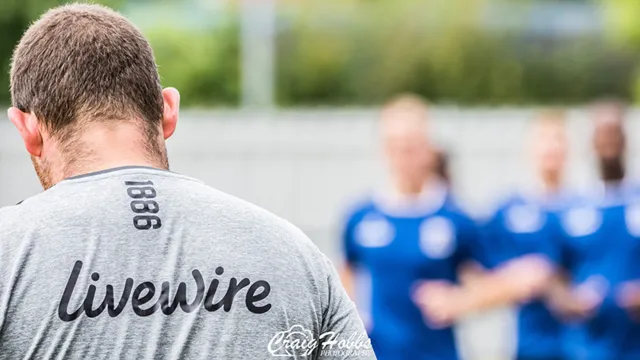The Power of Storytelling in Marketing
Do you feel like your content is ticking all the right boxes but still falling short with your audience? You're not alone. Did you know that a whopping 80% of consumers forget branded content within only three days? Making an impression in the oversaturated digital world of today requires more than just eye-catching imagery or creative copy; it also requires emotional connection.
The silver lining is that we can harness a tool to consistently deliver deeper connection. The answer is storytelling and it’s one of the most powerful tools to leave an enduring impression on your audience.
What is Storytelling in Marketing?
Storytelling in marketing is the strategic use of a brand narrative to aid in the communication of a brand’s messaging, values, and goals. Storytelling moves away from just selling products to attempting to make the brand’s audience feel something. To emotionally connect with a brand, the audience goes through a journey.
Did you know? According to Harvard Business School’s Gerald Zaltman, 95% of purchasing decisions are made subconsciously. This is why emotional marketing, driven by storytelling, creates such a powerful effect on consumer behaviour.
Real World Examples
Nike – "Awaken your madness"
Nike’s multi-decade-long campaign is a prime example of how storytelling in advertising can humanise a brand and fuel retention. Just Do It adverts typically consist of a famous athlete and their journey as a sportsperson.
For example, Nike’s ‘Awaken your Madness’ campaign depicts famous football stars such as Erling Haaland and Kylian Mbappe as children and current day, at the top of their game. The advert displays their internal battles and underlying pursuit of excellence throughout their lives. This style of content not only humanises Nike as a brand but also reinforces their ethos of pushing the boundaries and extraordinary performance.
Video from YouTube – Awaken Your Madness - By Nike Football
Airbnb - "Made possible by hosts"
Airbnb’s ‘Made Possible by Hosts’ campaign launched in 2020. The company shifted the focus from its platform to the hosts who supply the accommodation. This content was shared predominantly on social media channels, depicting heartwarming stories from host and guest experiences with Airbnb.
Relatable, authentic and highly personal. This campaign allowed Airbnb to connect with their customer base on a deeper, more human level. As a result of the campaign, Airbnb reported a 30% increase in bookings, while an IPOS 2020 survey also found that customer trust had increased by 25%.
Video from YouTube – Takashi’s Room | Kyoto - By Airbnb
Patagonia – "Stories we wear"
Patagonia’s incredibly successful "stories we wear" series began in 2012. More recently, launching the campaign on their website, YouTube and across social media. This campaign follows real customers, sharing the adventures behind their worn Patagonia gear.
This campaign successfully combined a perfect blend of customer testimony through storytelling, authentic user-generated content, and, of course, product promotion. Stories like these promote stronger connection to the brand, as well as reinforce the values and selling points of their products. The end result? An incredibly strong message.
Video from YouTube - Stories We Wear: The 15-Year-Old Jacket - By Patagonia
Why Storytelling Works
Building emotional connection
Audiences demand connection; otherwise, disengagement becomes all too real. According to Harvard Business, emotionally connected consumers are 52% more valuable than highly satisfied customers. This outlines the importance of nurturing an emotional connection with your customer base through storytelling. Simply put, connection drives loyalty and repeat purchase.
Supercharging brand recall
Harvard Business revealed in a study that people could retain 65-70% of information shared through stories, whereas 5-10% is typical when received through plain facts.
This is because when an customer recalls a brand, they are most likely thinking about the narrative surrounding the brand. Moreover, storytelling appears to be naturally effective at triggering parts of the brain associated with emotion and memory.
It humanises your brand
According to a Sprout Social survey, 86% of individuals indicate that authenticity matters when choosing the brands they want to support. Storytelling provides a human touch, moving their perception from just corporation to relatable companion.
It sets you apart
Content that uses a storytelling helps brands stand out, especially in crowded markets and on busy social media feeds. This style of content is often refreshing for the viewer, reducing the likelihood of a scroll and consequently greater interaction with your brand.
This is particularly effective with user-generated content, as rich storytelling is most effective when communicated from an ambassador or real customer. This strategy ultimately sets a company apart from the competition and gives you a strong competitive edge.
Drives engagement
Honda, for example, saw their dwell time rise 85% and their click-through rate rise 47% after moving their content hub from their legacy CMS to an immersive storytelling platform. This again highlights the engaging nature of storytelling content as a style that seems to instinctively connect deeper with an audience.
How to Bring Storytelling into Your Brand Strategy
Use Real Voices
User-generated content can provide the authenticity that audiences crave. According to Stackla’s 2021 report, 79% of consumers say user-generated content, which is often storytelling-based, highly impacts their purchasing decisions. Real customers and authentic ambassadors should be prioritised.
Know Your Audience
In order to maximise the effectiveness of storytelling in your content strategy, you need to understand what your audience values and their pain points. Stories must then be crafted to address these points directly, maximising your content's relatability and emotional impact.
Connect Stories with Your Brand’s Values
Just like Nike, Patagonia and Airbnb, storytelling can be utilised to reinforce a specific narrative or message surrounding your brand and its products. Patagonia used loyal customer testimony to highlight the durability and quality of their clothing. When storytelling is utilised alongside strong brand messaging, it cements those values as true in customers minds.
Make it a large scale strategy
Considering all of the above, storytelling can and should be deployed across all channels. This works well on many formats including: TV ads, social media, YouTube, web content etc. This maximises your reach amongst a wide range of customers, furthering a consistent brand narrative on a large scale.
Conclusion
In the modern era, where it is ever more difficult to stand out and be competitive, storytelling offers a unique advantage that has mostly gone under the radar. It’s not just about selling; it’s about building lasting connections and lifelong customers.
Ready to elevate your content and connect with your audience? Contact our team today for a free consultation.












